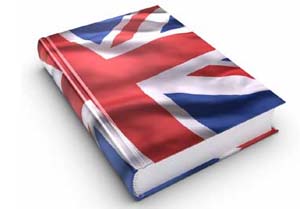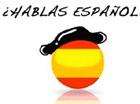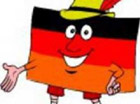 |
|
 |
|
| Visite: 1983 | Gradito: |
Leggi anche appunti:The TygerThe Tyger Tyger! Tyger! burning bright 1 In the forest Pronomi relativiPronomi relativi I pronomi relativi sono invariabili in genere e in numero. William BlakeWilliam Blake Blake ( 1757 - 1827 ) was a romantic author. Romanticism |
 |
 |
The Tyger
Tyger! Tyger! burning bright 1
In the forest of the night 2,
What immortal hand or eye
Could frame fearful symmetry 3?
In what distant deeps or skies
Burnt the fire of thine eyes 4?
On what wings dare he aspire 5?
What the hand dare 6 sieze the fire?
And what shoulder, & what art,
Could twist the sinews of thy heart?
And when thy heart began to beat 7,
What dread hand? And what dread feet?
What the hammer? What the chain?
In what furnace was thy brain 8?
What the anvil? What dread grasp
Dare its deadly terrors clasp?
When the starts threw down their spears,
And water'd heaven with their tears,
Did he smile his work to see?
Did he who made the Lamb make thee?
Tyger! Tyger! burning bright
In the forest of the night,
What immortal hand or eye
Dare frame thy fearful symmetry?
Tigre! Tigre! bruciante splendore
Nella foresta della notte
Quale immortale mano o occhio
Poté forgiare la tua spaventosa perfezione?
In quale lontana profondità o cielo
Ardeva il fuoco dei tuoi occhi?
Quali ali osava usare il tuo creatore per giungere alla meta ambita?
Quali mani osavano afferrare il fuoco?
Quale spalla e quale braccio
poterono attorcigliare i tendini del tuo cuore?
E quando il tuo cuore cominciò a battere,
Quale spaventosa mano? E quale spaventoso piede?
Quale martello? Quale catena?
In quale fornace fu il tuo cervello?
Quale incudine? Quale spavento morsetto
Osò afferrare il suo mortale terrore?
Quando le stelle lanciarono giù le loro lance,
e l'acqua dal cielo con loro lacrime,
sorrise vedendo il suo lavoro?
Chi creò l'agnello creò te?
Tigre! Tigre! bruciante splendore
Nella foresta della notte
Quale immortale mano o occhio
Osò forgiare la tua spaventosa perfezione?
In the collections Songs of Innocence and Songs of Experience two poems correspond because they have the same title or because they have the same subject. The Lamb and The Tyger correspond because they have the same subject: the creation.
In this poem there isn't a continuos refrain, as in The Lamb. There are sounds repeated, but they aren't so many as in the other poem.
The structure of The Tyger is different from the structure of The Lamb, it is more regular, that of The Lamb is more varied.
This poem ends with a question. There are only questions, it is difficult to give answers.
There is an opposition between burning and evil. In this creature there are evil and good. The oppositions are very used by Blake. Another opposition is fearful symmetry.
The setting of this poem is gloomy. The lamb is in vale. The tiger is a dangerous place, it is in a forest. The forest is a dark place.
The question that the author asks into The tiger is the same the he asks into The lamb. In The Lamb the question is more immediate, more infantile. The author is not able to say whether the same God had created the lamb and the tiger. There is only a God; he creates good and evil. Why does the evil exist? There aren't answers to the sufferings of innocents. The sufferings for adults are tests to pass to rejoin to God.
Fire has a double connotation. If the men dominate the fire, it is positive. If the fire gets the upper hand over men, it is negative. Here it has a negative connotation.
This image is clearly associated with the myth of Icarus. Icarus dared something of prohibited, so he was punished.
In The Lamb Blake uses the verb to make; in the 1st stanza of this poems he uses the verb can; here he uses the verb to dare because the creator has gone beyond limits with the creation of the tiger. He has risked. Here Blake uses an ascending climax.
When the heart is coming to beat a new life is coming. There something of independent is coming. It is independent by the will of creator.
The brain symbolise the complete independence from the creator. Here there was another ascending climax.
 |
| Appunti su: https:wwwappuntimaniacomumanisticheinglesethe-tyger13php, |
|
| Appunti Spagnolo |  |
| Tesine Francese |  |
| Lezioni Tedesco |  |